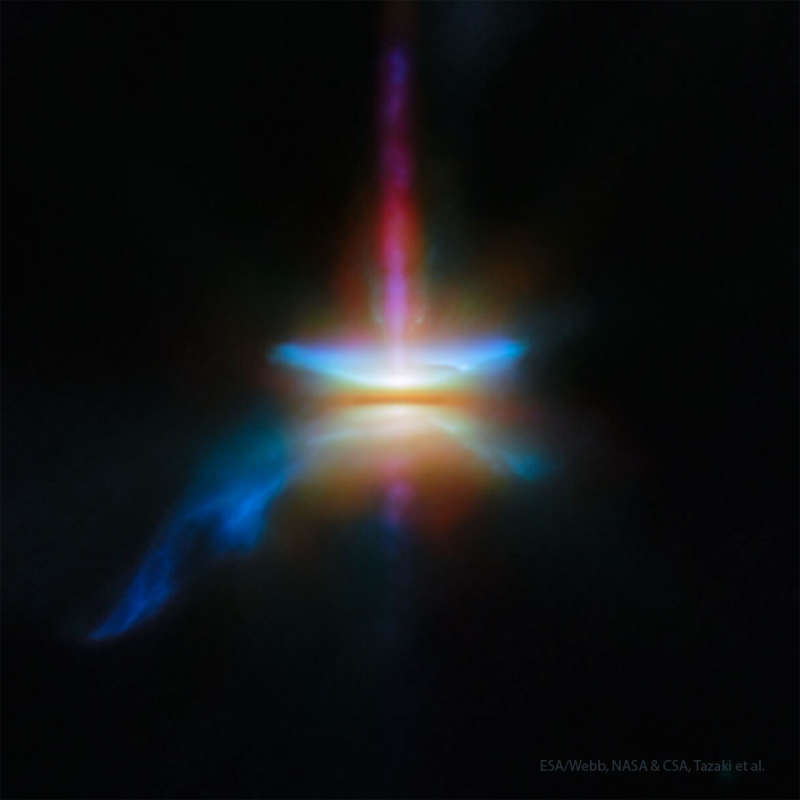APOD: 2025 February 19 B HH 30: A Star System with Planets Now Forming

Explanation:
How do stars and planets form?
New clues have been found in the protoplanetary system
Herbig-Haro 30
by the
James Webb Space Telescope in concert with
Hubble and the Earth-bound
ALMA.
The
observations show, among other things, that large
dust grains are more
concentrated into a central disk where they can form planets.
The featured image from Webb shows many attributes of the active HH-30 system.
Jets of particles are being expelled vertically,
shown in red, while a dark
dust-rich disk is seen across the center,
blocking the light from the star or stars still forming there.
Blue-reflecting dust is seen in a
parabolic arc
above and below the central disk,
although why a tail appears on the lower left is currently unknown.
Studying how planets form in
HH 30
can help astronomers better understand how planets in our own
Solar System once formed, including
our Earth.
| << Yesterday | 19.02.2025 | Tomorrow >> |

1999 2000 2001 2002 2003 2004 2005 2006 2007 2008 2009 2010 2011 2012 2013 2014 2015 2016 2017 2018 2019 2020 2021 2022 2023 2024 2025 |
Yanvar' Fevral' Mart Aprel' Mai Iyun' Iyul' Avgust Sentyabr' Oktyabr' Noyabr' Dekabr' |
NASA Web Site Statements, Warnings, and Disclaimers
NASA Official: Jay Norris. Specific rights apply.
A service of: LHEA at NASA / GSFC
& Michigan Tech. U.
|
Publikacii s klyuchevymi slovami:
Herbig-Haro object - planet formation - Ob'ekt Herbiga-Aro - Formirovanie planet
Publikacii so slovami: Herbig-Haro object - planet formation - Ob'ekt Herbiga-Aro - Formirovanie planet | |
Sm. takzhe:
Vse publikacii na tu zhe temu >> | |